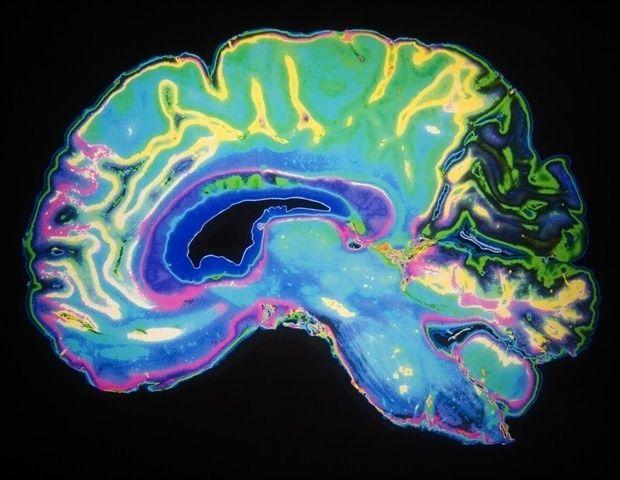UCLA Study Reveals Striking Similarities Between Biological Brains and AI in Social Interactions
2 Sources
2 Sources
[1]
Striking parallels between biological brains and AI during social interaction suggest fundamental principles
UCLA researchers have made a significant discovery showing that biological brains and artificial intelligence systems develop remarkably similar neural patterns during social interaction. This first-of-its-kind study reveals that when mice interact socially, specific brain cell types synchronize in "shared neural spaces," and AI agents develop analogous patterns when engaging in social behaviors. The study, "Inter-brain neural dynamics in biological and artificial intelligence systems," appears in the journal Nature. This new research represents a striking convergence of neuroscience and artificial intelligence, two of today's most rapidly advancing fields. By directly comparing how biological brains and AI systems process social information, scientists reveal fundamental principles that govern social cognition across different types of intelligent systems. The findings could advance understanding of social disorders like autism, while simultaneously informing the development of socially-aware AI systems. This comes at a critical time when AI systems are increasingly integrated into social contexts, making understanding of social neural dynamics essential for both scientific and technological progress. A multidisciplinary team from UCLA's departments of Neurobiology, Biological Chemistry, Bioengineering, Electrical and Computer Engineering, and Computer Science across the David Geffen School of Medicine and the Henry Samueli School of Engineering used advanced brain imaging techniques to record activity from molecularly defined neurons in the dorsomedial prefrontal cortex of mice during social interactions. Mice serve as an important model for understanding mammalian brain function because they share fundamental neural mechanisms with humans, particularly in brain regions involved in social behavior. The researchers developed a novel computational framework to identify high-dimensional "shared" and "unique" neural subspaces across interacting individuals. The team then trained artificial intelligence agents to interact socially and applied the same analytical framework to examine neural network patterns in AI systems that emerged during social versus non-social tasks. The research revealed striking parallels between biological and artificial systems during social interaction. In both mice and AI systems, neural activity could be partitioned into two distinct components: a "shared neural subspace" containing synchronized patterns between interacting entities, and a "unique neural subspace" containing activity specific to each individual. Remarkably, GABAergic neurons -- inhibitory brain cells that regulate neural activity -- showed significantly larger shared neural spaces compared to glutamatergic neurons, the brain's primary excitatory cells. This represents the first investigation of inter-brain neural dynamics in molecularly defined cell types, revealing previously unknown differences in how specific neuron types contribute to social synchronization. When the same framework was applied to AI agents, shared neural dynamics also emerged as artificial systems developed social interaction capabilities. Most importantly, when researchers selectively disrupted these shared neural components in artificial systems, social behaviors were substantially reduced, providing the direct evidence that synchronized neural patterns causally drive social interactions. The study also revealed that shared neural dynamics don't simply reflect coordinated behaviors between individuals, but emerge from representations of each other's unique behavioral actions during social interaction. The research team plans to further investigate shared neural dynamics in different and potentially more complex social interactions. They also aim to explore how disruptions in shared neural space might contribute to social disorders and whether therapeutic interventions could restore healthy patterns of inter-brain synchronization. The artificial intelligence framework may serve as a platform for testing hypotheses about social neural mechanisms that are difficult to examine directly in biological systems. They also aim to develop methods to train socially intelligent AI. "This discovery fundamentally changes how we think about social behavior across all intelligent systems," said Weizhe Hong, Ph.D., professor of Neurobiology, Biological Chemistry, and Bioengineering at UCLA and lead author of the new work. "We've shown for the first time that the neural mechanisms driving social interaction are remarkably similar between biological brains and artificial intelligence systems. This suggests we've identified a fundamental principle of how any intelligent system -- whether biological or artificial -- processes social information. "The implications are significant for both understanding human social disorders and developing AI that can truly understand and engage in social interactions."
[2]
First-of-Its-Kind Study Finds Striking Parallels Between Biological and Artificial Intelligence During Social Interaction | Newswise
Newswise -- UCLA researchers have made a significant discovery showing that biological brains and artificial intelligence systems develop remarkably similar neural patterns during social interaction. This first-of-its-kind study reveals that when mice interact socially, specific brain cell types synchronize in "shared neural spaces," and AI agents develop analogous patterns when engaging in social behaviors. The study appears in the journal Nature. Why it matters This new research represents a striking convergence of neuroscience and artificial intelligence, two of today's most rapidly advancing fields. By directly comparing how biological brains and AI systems process social information, scientists reveal fundamental principles that govern social cognition across different types of intelligent systems. The findings could advance understanding of social disorders like autism, while simultaneously informing the development of socially-aware AI systems. This comes at a critical time when AI systems are increasingly integrated into social contexts, making understanding of social neural dynamics essential for both scientific and technological progress. What the study did A multidisciplinary team from UCLA's departments of Neurobiology, Biological Chemistry, Bioengineering, Electrical and Computer Engineering, and Computer Science across the David Geffen School of Medicine and the Henry Samueli School of Engineering used advanced brain imaging techniques to record activity from molecularly defined neurons in the dorsomedial prefrontal cortex of mice during social interactions. Mice serve as an important model for understanding mammalian brain function because they share fundamental neural mechanisms with humans, particularly in brain regions involved in social behavior. The researchers developed a novel computational framework to identify high-dimensional "shared" and "unique" neural subspaces across interacting individuals. The team then trained artificial intelligence agents to interact socially and applied the same analytical framework to examine neural network patterns in AI systems that emerged during social versus non-social tasks. What they found The research revealed striking parallels between biological and artificial systems during social interaction. In both mice and AI systems, neural activity could be partitioned into two distinct components: a "shared neural subspace" containing synchronized patterns between interacting entities, and a "unique neural subspace" containing activity specific to each individual. Remarkably, GABAergic neurons -- inhibitory brain cells that regulate neural activity -- showed significantly larger shared neural spaces compared to glutamatergic neurons, the brain's primary excitatory cells. This represents the first investigation of inter-brain neural dynamics in molecularly defined cell types, revealing previously unknown differences in how specific neuron types contribute to social synchronization. When the same framework was applied to AI agents, shared neural dynamics also emerged as artificial systems developed social interaction capabilities. Most importantly, when researchers selectively disrupted these shared neural components in artificial systems, social behaviors were substantially reduced, providing the direct evidence that synchronized neural patterns causally drive social interactions. The study also revealed that shared neural dynamics don't simply reflect coordinated behaviors between individuals, but emerge from representations of each other's unique behavioral actions during social interaction. What's next The research team plans to further investigate shared neural dynamics in different and potentially more complex social interactions. They also aim to explore how disruptions in shared neural space might contribute to social disorders and whether therapeutic interventions could restore healthy patterns of inter-brain synchronization. The artificial intelligence framework may serve as a platform for testing hypotheses about social neural mechanisms that are difficult to examine directly in biological systems. They also aim to develop methods to train socially intelligent AI. From the experts "This discovery fundamentally changes how we think about social behavior across all intelligent systems," said Weizhe Hong, Ph.D., professor of Neurobiology, Biological Chemistry, and Bioengineering at UCLA and lead author of the new work. "We've shown for the first time that the neural mechanisms driving social interaction are remarkably similar between biological brains and artificial intelligence systems. This suggests we've identified a fundamental principle of how any intelligent system -- whether biological or artificial -- processes social information. The implications are significant for both understanding human social disorders and developing AI that can truly understand and engage in social interactions." The study was led by Weizhe Hong and Jonathan C. Kao at UCLA. Co-first authors Xingjian Zhang and Nguyen Phi, along with collaborators Qin Li, Ryan Gorzek, Niklas Zwingenberger, Shan Huang, John L. Zhou, Lyle Kingsbury, Tara Raam, Ye Emily Wu, and Don Wei contributed to the research. The interdisciplinary team includes researchers from UCLA's Department of Neurobiology, Department of Biological Chemistry, Department of Bioengineering, Department of Electrical and Computer Engineering, and Department of Computer Science. This work was supported in part by the NIH, NSF, Packard Foundation, Vallee Foundation, Mallinckrodt Foundation, and Brain and Behavior Research Foundation. This work was supported in part by National Institutes of Health grants (R01 MH130941, R01 NS113124, R01 MH132736, and RF1NS132912), a Packard Fellowship in Science and Engineering, a Vallee Scholar Award and a Mallinckrodt Scholar Award (to W.H.), the NIH DP2 NS122037 and NSF CAREER 194346 (to J.C.K.), the NIH F31 MH134521 and an NSF NRT (to N.P.), and a Brain and Behavior Research Foundation grant (to X.Z.).
Share
Share
Copy Link
Researchers at UCLA have discovered remarkable parallels between how biological brains and AI systems process social information, potentially revolutionizing our understanding of social cognition and AI development.
Groundbreaking Discovery in Neuroscience and AI
Researchers at UCLA have made a significant breakthrough in understanding social cognition across biological and artificial intelligence systems. The study, published in Nature, reveals remarkable similarities in neural patterns between biological brains and AI systems during social interactions
1
.Study Methodology

Source: Tech Xplore
The multidisciplinary team employed advanced brain imaging techniques to record neural activity in mice during social interactions. They focused on the dorsomedial prefrontal cortex, a region crucial for social behavior. Concurrently, they trained AI agents for social interaction and analyzed their neural network patterns
2
.Key Findings
The research uncovered that both mice and AI systems exhibit two distinct components in their neural activity during social interactions:
- A "shared neural subspace" containing synchronized patterns between interacting entities.
- A "unique neural subspace" containing activity specific to each individual.
Notably, GABAergic neurons, which are inhibitory brain cells, showed significantly larger shared neural spaces compared to glutamatergic neurons, the primary excitatory cells
1
.Implications for AI and Neuroscience
This study represents a convergence of neuroscience and artificial intelligence, revealing fundamental principles governing social cognition across different types of intelligent systems. The findings suggest that synchronized neural patterns causally drive social interactions, as disrupting these shared neural components in AI systems substantially reduced social behaviors
2
.Related Stories
Potential Applications
The research has significant implications for both understanding human social disorders and developing socially-aware AI systems. It could potentially advance the treatment of conditions like autism and inform the creation of AI that can truly understand and engage in social interactions
1
.Future Research Directions
The team plans to investigate shared neural dynamics in more complex social interactions and explore how disruptions in shared neural space might contribute to social disorders. They also aim to develop methods for training socially intelligent AI and use the artificial intelligence framework as a platform for testing hypotheses about social neural mechanisms
2
.As lead author Weizhe Hong stated, "This discovery fundamentally changes how we think about social behavior across all intelligent systems," highlighting the potential for this research to reshape our understanding of social cognition in both biological and artificial systems
1
.References
Summarized by
Navi
[1]
Related Stories
Recent Highlights
1
Meta acquires Manus for $2 billion, adding revenue-generating AI agents to its platforms
Business and Economy

2
China proposes world's strictest AI chatbot rules to prevent suicide and emotional manipulation
Policy and Regulation

3
Deepfakes cross indistinguishable threshold as voice cloning and video realism surge 900%
Technology








